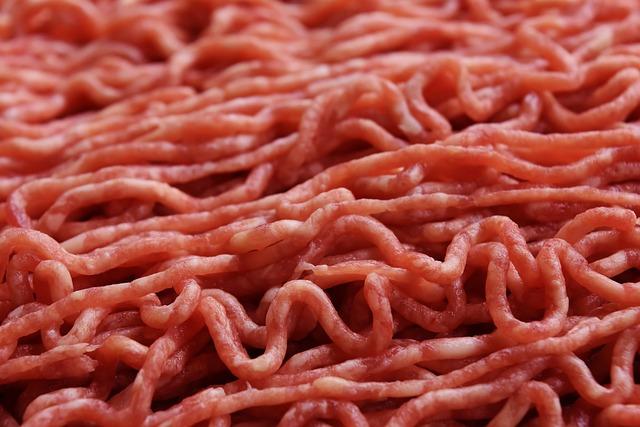In the tapestry of culinary tradition, red meat has long held a place of honor, revered for its rich flavors and hearty nourishment. Yet, as we navigate the intricate landscape of modern health consciousness, this age-old staple finds itself at the center of a complex debate. From sizzling steaks to succulent lamb chops, the allure of red meat is undeniable, but so too are the questions it raises about our well-being. In this exploration, we delve into the multifaceted impact of red meat on health, unraveling the threads of scientific inquiry, dietary wisdom, and cultural significance that shape our understanding. Whether you’re a devoted carnivore or a cautious consumer, join us as we embark on a journey to uncover the truths and nuances surrounding this dietary cornerstone.
Understanding the Nutritional Profile of Red Meat
Red meat is a rich source of essential nutrients that contribute significantly to a balanced diet. It is packed with high-quality protein, which is crucial for muscle growth and repair. Additionally, red meat provides a substantial amount of vitamins and minerals, including:
- Iron: Essential for oxygen transport in the blood and energy production.
- Zinc: Supports immune function and aids in cell division.
- Vitamin B12: Vital for nerve function and the production of DNA and red blood cells.
Despite these benefits, it is important to consume red meat in moderation. While it offers numerous nutrients, it is also associated with higher levels of saturated fat and cholesterol. To balance its benefits and potential risks, consider opting for lean cuts and incorporating a variety of protein sources into your diet, such as poultry, fish, and plant-based proteins. This approach helps ensure a diverse intake of nutrients while maintaining overall health.

Exploring the Health Risks Associated with Red Meat Consumption
The debate surrounding red meat consumption is as sizzling as the grill itself. While red meat is a rich source of protein, vitamins, and minerals, it’s important to consider the potential health risks linked to its consumption. Studies have suggested a correlation between high red meat intake and an increased risk of certain health conditions. Some of these risks include:
- Cardiovascular Disease: Saturated fats and cholesterol found in red meat may contribute to heart disease. The nitrates in processed meats can further exacerbate these effects.
- Cancer: Red and processed meats have been classified as carcinogenic by the World Health Organization. High-temperature cooking methods, such as grilling or barbecuing, can produce harmful compounds.
- Type 2 Diabetes: Consuming red meat has been linked to insulin resistance, which is a precursor to diabetes.
Despite these concerns, moderate consumption of lean, unprocessed red meat can be part of a balanced diet. The key is to make informed choices and consider incorporating a variety of protein sources into your meals.

Red Meat and Its Role in a Balanced Diet
Incorporating red meat into a balanced diet can provide essential nutrients that support overall health. Red meat is a significant source of high-quality protein, which is crucial for muscle development and maintenance. Additionally, it supplies vital vitamins and minerals, such as:
- Iron: Helps in the production of hemoglobin, facilitating oxygen transport in the blood.
- Zinc: Essential for a healthy immune system and wound healing.
- Vitamin B12: Supports nerve function and the production of DNA and red blood cells.
While these nutrients are beneficial, moderation is key. Balancing red meat with a variety of other protein sources, like poultry, fish, and plant-based options, ensures a well-rounded intake of nutrients. It’s also advisable to choose lean cuts and be mindful of portion sizes to mitigate any potential negative health impacts.

Practical Tips for Reducing Red Meat Intake
Transitioning to a diet with less red meat can be both simple and rewarding. Start by introducing more plant-based proteins into your meals. Legumes, such as lentils and chickpeas, are not only nutritious but also versatile. Try swapping your usual beef chili with a hearty lentil stew or use black beans in tacos for a satisfying twist. If you enjoy the texture of meat, consider experimenting with tofu or tempeh, which can be marinated and cooked to mimic the flavors you love.
- Experiment with Meatless Mondays: Dedicate one day a week to exploring vegetarian recipes.
- Choose Smaller Portions: Opt for a smaller cut of meat and fill your plate with vegetables and whole grains.
- Explore Alternative Meats: Try poultry or fish as a substitute, which can offer a lighter option without sacrificing protein.
Another effective strategy is to enhance the flavor of your dishes with herbs and spices. This not only boosts taste but can also make meals more enjoyable without the need for red meat. Cooking with a variety of seasonings, such as cumin, garlic, and fresh herbs, can elevate a simple vegetable stir-fry to a gourmet experience. By gradually incorporating these changes, you can enjoy a balanced diet while reducing your red meat intake.
Future Outlook
As we conclude our exploration into the intricate relationship between red meat and health, it becomes clear that this subject is as multifaceted as the marbling in a prime cut of beef. Red meat, in its rich tapestry of nutrients and potential risks, offers both sustenance and a challenge—a reminder of the delicate balance we must strike in our dietary choices. Whether you find yourself savoring a steak or opting for plant-based alternatives, the key lies in informed decisions and moderation. As with any culinary journey, the path you choose should align with your health goals and ethical considerations, all while respecting the complex interplay of tradition, science, and personal well-being. the plate before us is not just a meal; it is a reflection of our values and the ever-evolving story of our health.


































